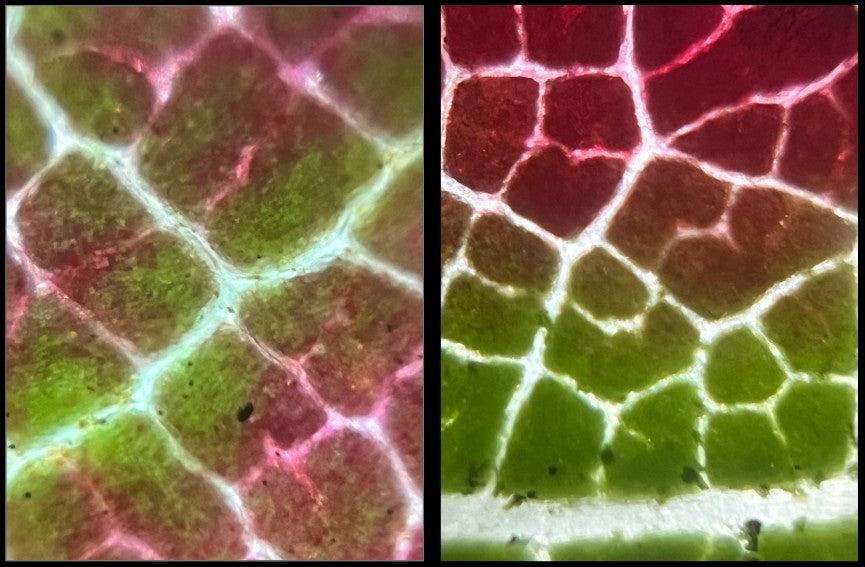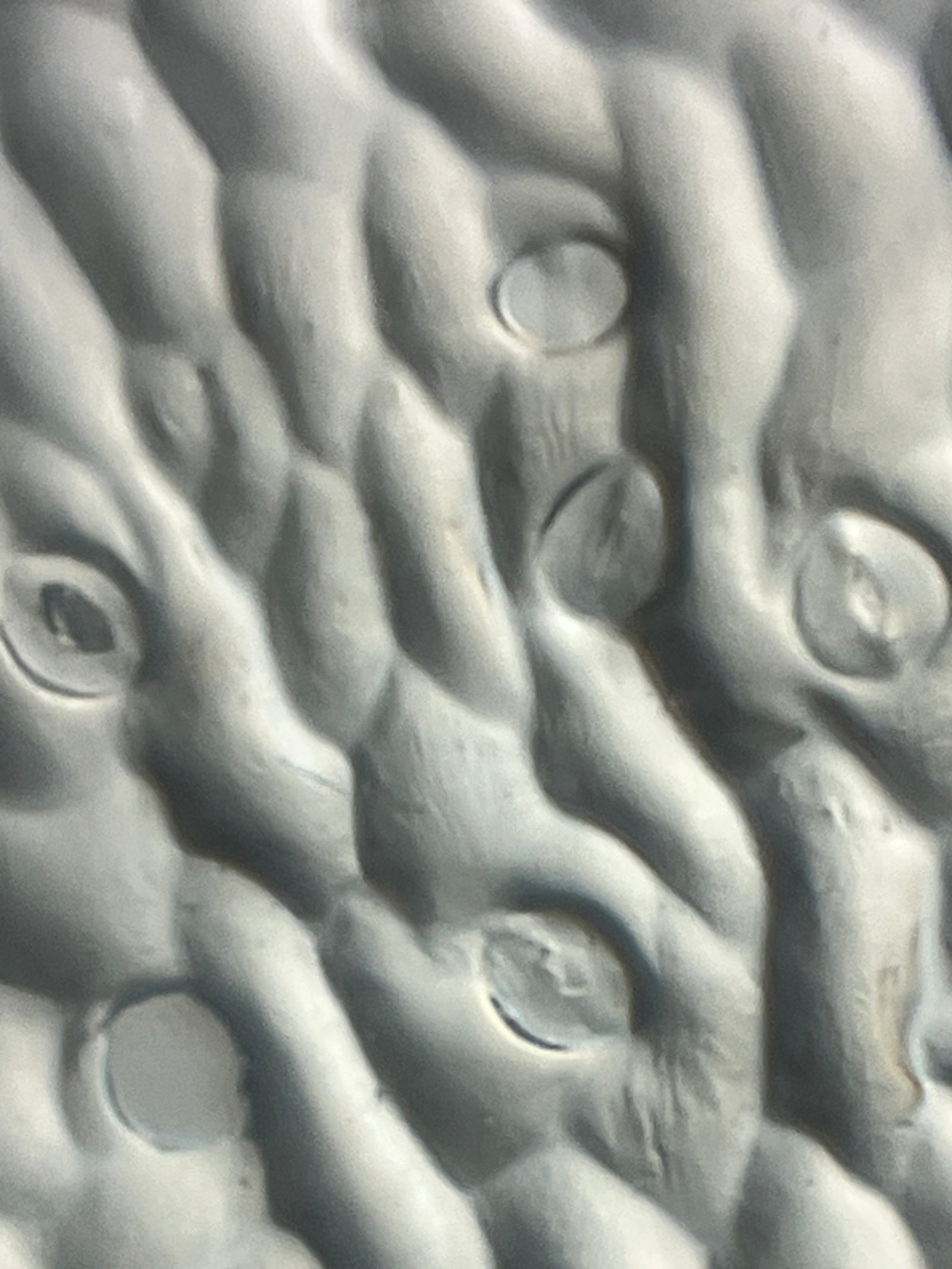Valentine’s Day is close and I am seeing boxes of conversation hearts candies everywhere! Rather than eat them all, I decided to look at them under my Foldscope 2.0! Read on to find out what I saw!
Figure 1. Picture of a conversation heart candy
(Photo Credit: Holly A. Stuart)
Reflective Lighting View
I have a tendency to look at something and think to myself, “Hmmm, I wonder what that would look like under my Foldscope…” I used to be limited to only observing transparent or translucent objects in my Foldscope, but with the reflective lighting option on the 2.0 LED light module, I could put the whole conversation heart in there and get a close up view of each of the letters!
Figure 2. Picture of the letters on the conversation heart viewed under a Foldscope 2.0 at 50X magnification with reflective lighting
(Photo Credit: Holly A. Stuart)
Darkfield Lighting View
The first ingredient in conversation hearts candy is sugar, so I naturally expected to be able to see sugar crystals under the Foldscope. I collected some of the powder that had collected in the bottom of the box, placed it on a slide, and began looking at the crystals with darkfield lighting. This is accomplished by attaching the 2.0 LED light module to the back of the Foldscope and then sliding the light slightly to the side so that the background changes from white to black. This causes the sugar crystals to take on a more three dimensional look.
Figure 3. Picture of candy powder viewed under a Foldscope 2.0 at 340X magnification plus 5X zoom on phone with brightfield (two images on the left) and darkfield lighting (two images on the right)
(Photo Credit: Holly A. Stuart)
Polarizing Filter View
A fun thing to do when using a microscope is to use polarizing filters. These filters control the direction of the light waves that hit the sample, causing interesting colors to appear or making objects disappear from view. I made a solution of conversation heart candies and boiling water and looked at the liquid with my Foldscope and two polarizing filters.
Figure 4. Picture of dissolving conversation heart candies in a petri dish and boiling water
(Photo Credit: Holly A. Stuart)
I taped one polarizing filter to the back of my Foldscope and then attached the LED light module. I placed another polarizing filter on the front of the Foldscope in between the lens and my phone.
Figure 5. Setting up a Foldscope 2.0 and polarizing filters
(Photo Credit: Holly A. Stuart)
I took a picture of the sample with the sheets parallel to one another (left) and another with the sheets perpendicular to one another (right). It is interesting to note that some crystals are visible when the sheets are parallel but seem to disappear when the sheets are perpendicular. This is a fun phenomena to experiment with when you are looking at samples under your Foldscope.
Figure 6. Picture of dissolved conversation heart candy liquid viewed under a Foldscope 2.0 at 340X magnification plus 5X zoom on phone with polarizing filters parallel (left) and perpendicular (right)
(Photo Credit: Holly A. Stuart)
No matter what type of candy you decide to put under your Foldscope, I hope you have fun exploring the many different ways you can observe its microscopic features.
Figure 7. Picture of dissolved conversation heart candy liquid viewed under a Foldscope 2.0 at 140X magnification plus 5X zoom on phone
(Photo Credit: Holly A. Stuart)
Have you played with lighting while looking at samples under a Foldscope 2.0? Use your Foldscope to dive into the microscopic world and find the beauty that is there waiting for you. Share your microscopic images and thoughts on the Microcosmos. Be sure to tag us on social media when you post the results of your explorations, creations, and discoveries! We love to see how Foldscopers around the world are using their Foldscopes in new and innovative ways!
Facebook: @Foldscope
Instagram: @teamfoldscope
Blue Sky: @teamfoldscope.bsky.social
TikTok: @foldscope
Threads: @teamfoldscope
Twitter: @TeamFoldscope



